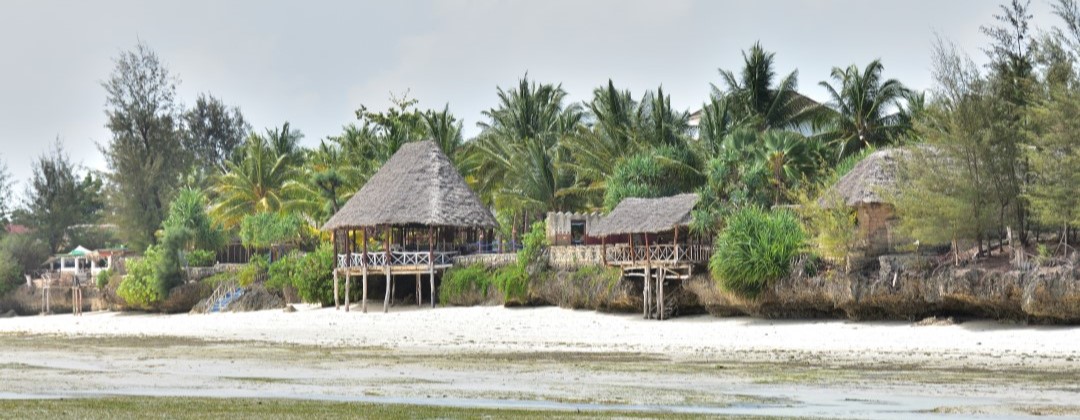Our Christmas Newsletter saw us heading back to Kenya and Zanzibar to further research these astounding destinations and now we’re back. This is our trip blog with an unrepeatable Special Offer
Click the link to our Special Offer or continue reading – you’ll find the special offer at the end.
We weren’t disappointed – Africa delivered as we hope the attached images will illustrate. Africa delivered – from the incredible wildlife encounters and sensational activities to the stunning beaches and amazing food we experienced at the start of this year. Zanzibar is vibrant, fascinating, exciting and a wonderful destination to chill. Nairobi delivered the bustling city vibe with museums, restaurants, local crafts and even feeding Rothschild giraffe while Laikipia and the Mara produced the Big 5 and more.
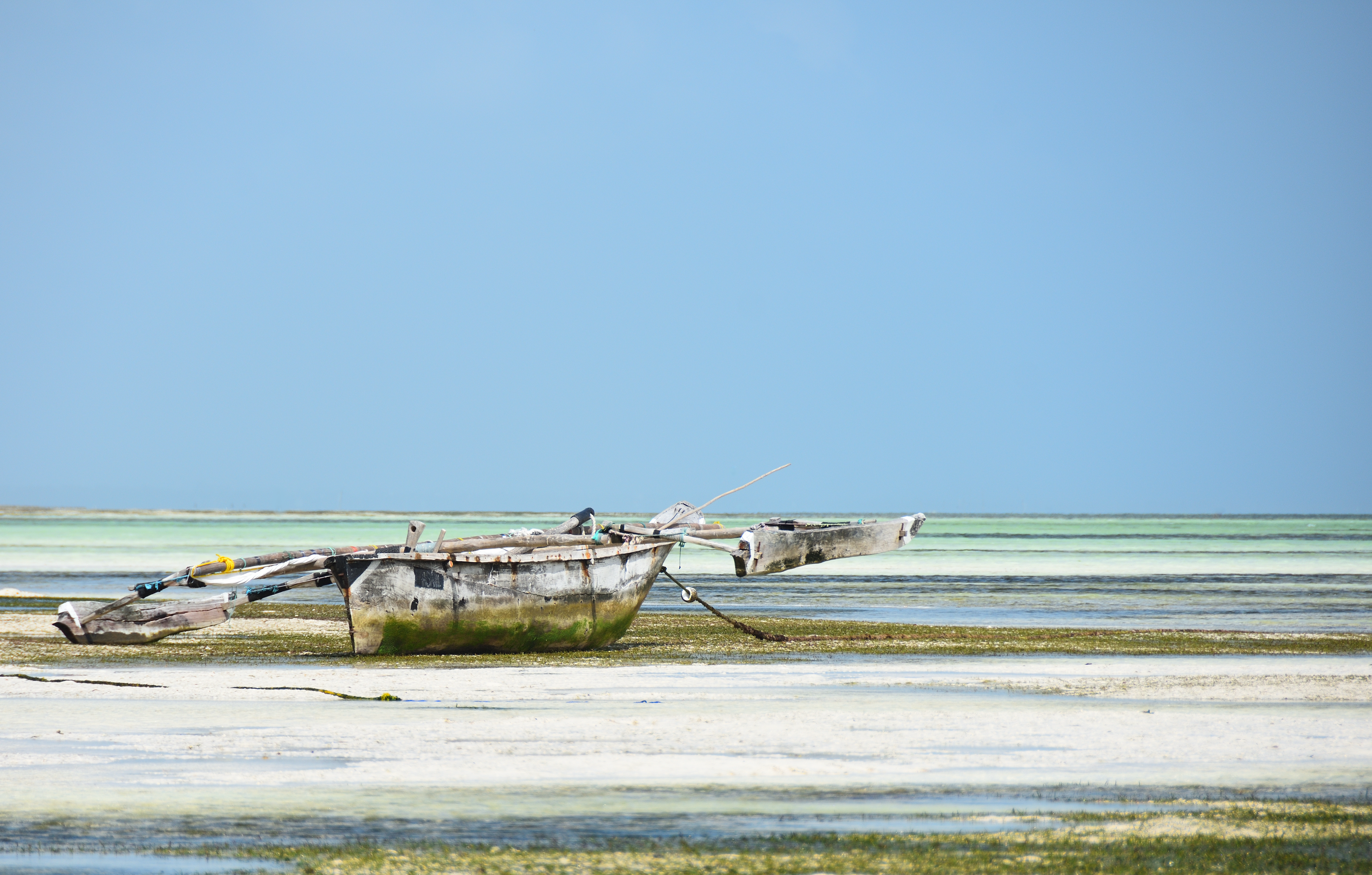
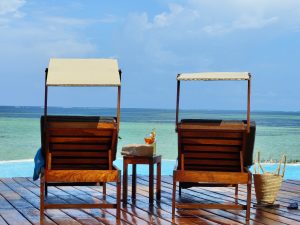
Ultimate Zanzibar must-do-list
- Explore Stone Town
- Go Scuba Diving
- Visit Jambiani Beach for Kite Surfing & Sailing
- Explore Jozani Forest Reserve and discover the rare and endangered red colobus monkeys
- Relax on one of the glorious beaches
- Visit untouched Uzi Island
- Learn about the spice trade
- Savour traditional Zanzibar cuisine
- Experience the island’s vibrant culture and explore a local market
- Go snorkelling on Mnemba Atoll
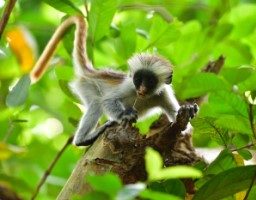 Jozani Forest Reserve is home to the rare and endangered Red Colobus monkey. Here a baby monkey uses a tool to probe holes in a tree limb. After Zanzibar we returned to Nairobi for a couple of nights before heading on to Laikipia, located on the Equator. In the Nairobi suburb of Karen, we stayed in a charming boutique hotel. Originally a family home this traditional South African style house is now an elegant and comfortable place to stay full of interesting artefacts accumulated over the owner’s lifetime.
Jozani Forest Reserve is home to the rare and endangered Red Colobus monkey. Here a baby monkey uses a tool to probe holes in a tree limb. After Zanzibar we returned to Nairobi for a couple of nights before heading on to Laikipia, located on the Equator. In the Nairobi suburb of Karen, we stayed in a charming boutique hotel. Originally a family home this traditional South African style house is now an elegant and comfortable place to stay full of interesting artefacts accumulated over the owner’s lifetime.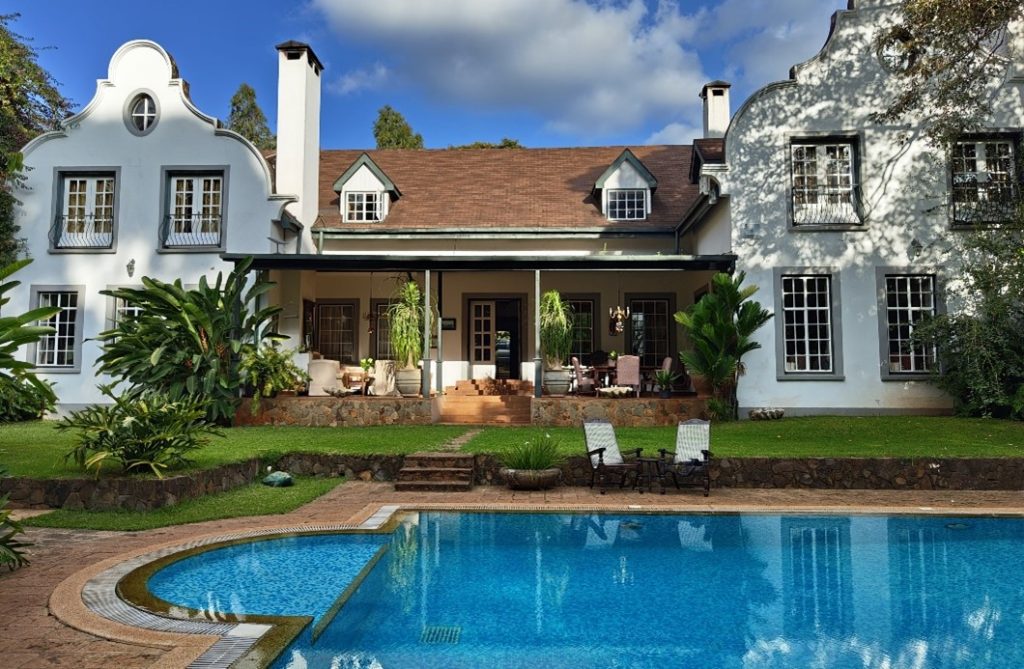
The hotel is conveniently located for the local sites including the house that Karen Blixen lived in between 1914 and 1931. At the age of 29 she left Denmark to marry her second cousin, Baron Bror von Blixen-Finecke, to establish a dairy farm on 6000 acres in what is now the Karen suburb of Nairobi. Unfortunately her husband had started growing coffee, which was very risky at the altitude of 6,000 feet (1,830 meters) above sea level, and the farm eventually failed due to a combination of poor harvests and a fire.
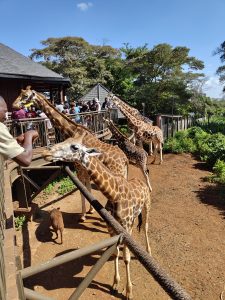 Karen Blixen’s life in Africa is the subject of the Oscar winning film “Out of Africa” staring Meryl Streep. The house is now a museum situated only a few kilometres from our hotel and well worth a visit. In addition to the museum there are retail outlets selling local goods and workshops demonstrating various crafts, including bead making. There is also Giraffe Centre the conservation facility for the endangered Rothschilds Giraffe. The Rothschild Giraffe is one of the most endangered distinct populations of giraffe, with less than 1500 mature individuals estimated in the wild (2018). At Giraffe Centre you can learn about these gentle animals and feed them treats! From Nairobi we headed north past Mt Kenya to Laikipia.
Karen Blixen’s life in Africa is the subject of the Oscar winning film “Out of Africa” staring Meryl Streep. The house is now a museum situated only a few kilometres from our hotel and well worth a visit. In addition to the museum there are retail outlets selling local goods and workshops demonstrating various crafts, including bead making. There is also Giraffe Centre the conservation facility for the endangered Rothschilds Giraffe. The Rothschild Giraffe is one of the most endangered distinct populations of giraffe, with less than 1500 mature individuals estimated in the wild (2018). At Giraffe Centre you can learn about these gentle animals and feed them treats! From Nairobi we headed north past Mt Kenya to Laikipia. 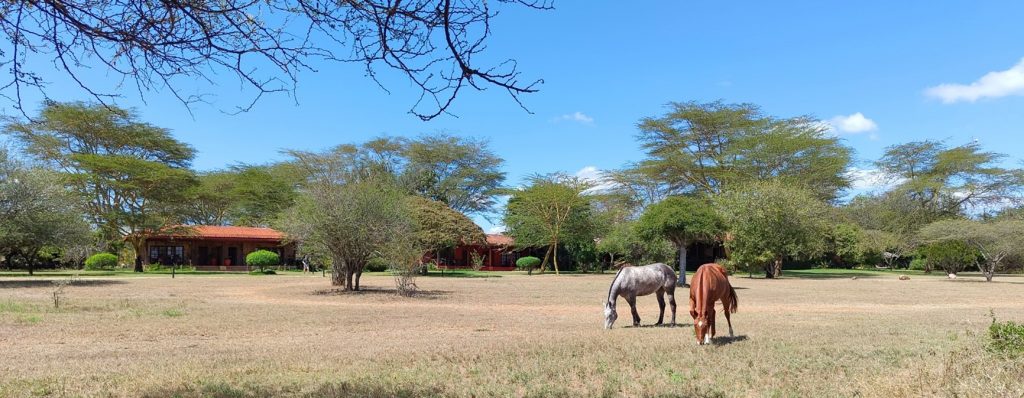
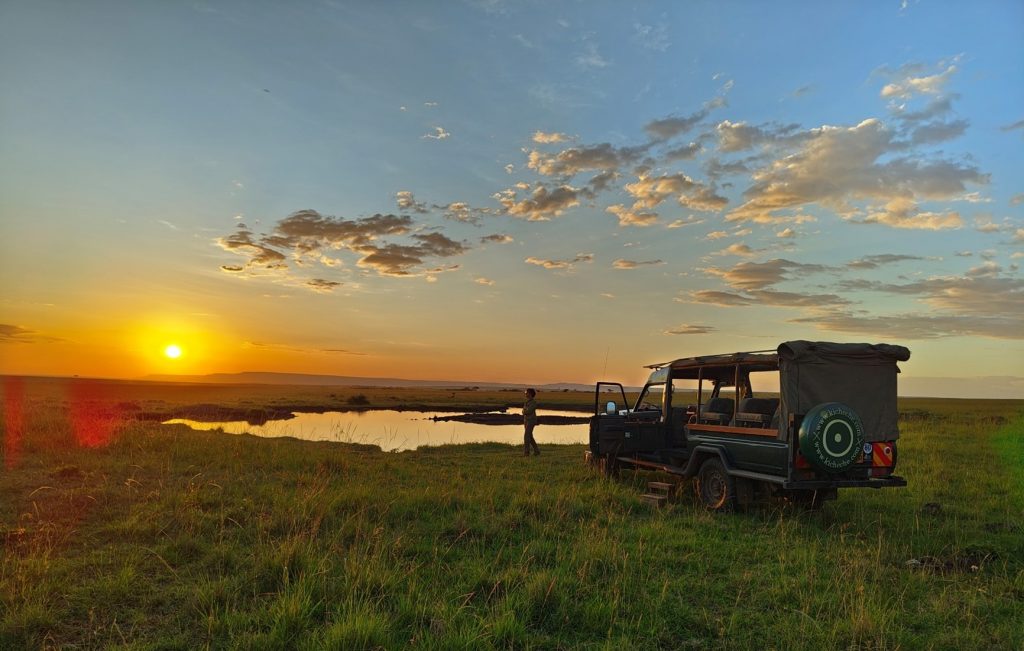
 Stylish dining in camp and on bush breakfasts and equally stylish accommodation is normal.
Stylish dining in camp and on bush breakfasts and equally stylish accommodation is normal. 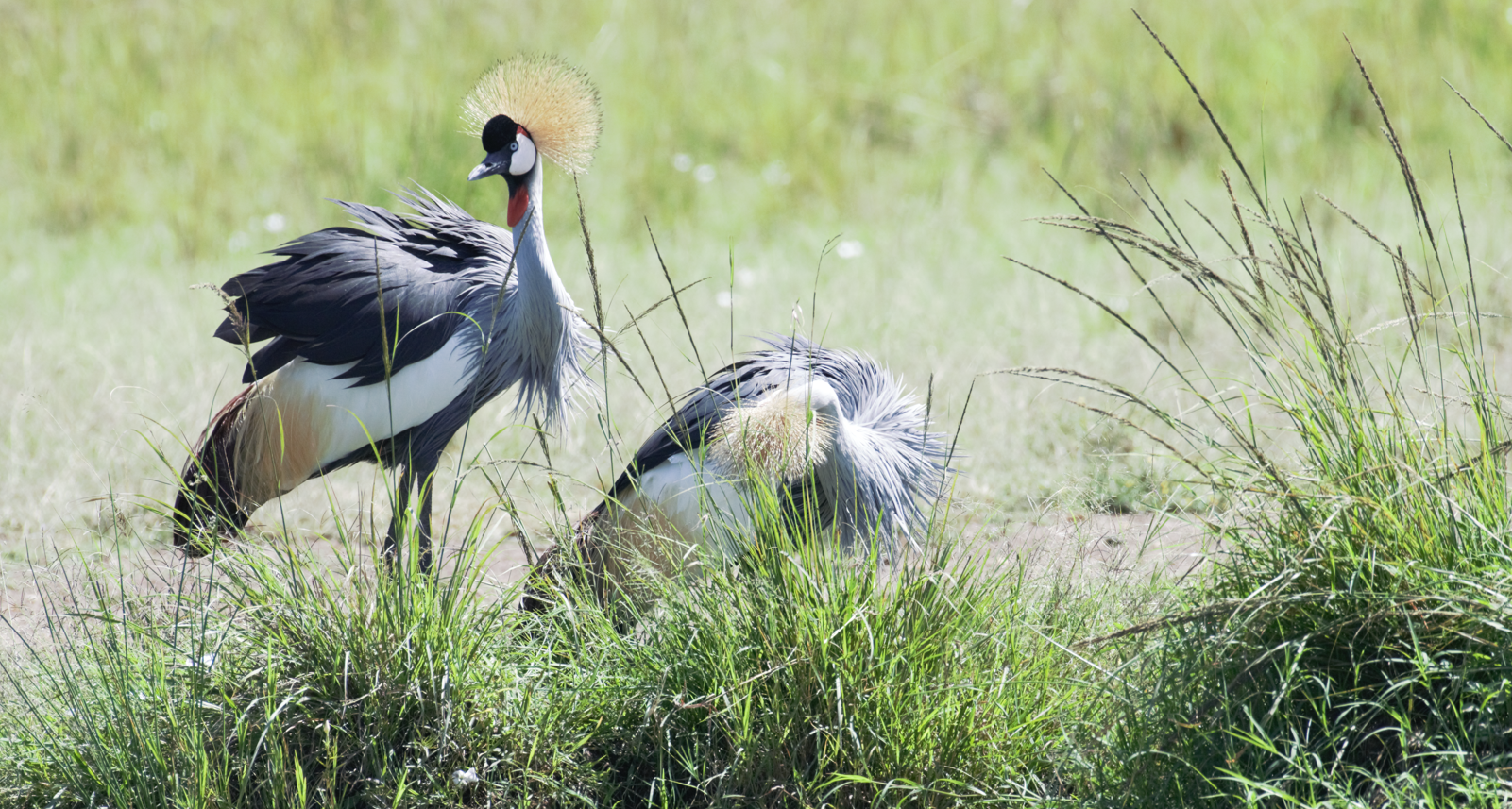 Of course, a wilderness/wildlife experience is not just about the Big 5.
Of course, a wilderness/wildlife experience is not just about the Big 5.
For those birding enthusiasts Africa is a dream destination. Even for those who scarcely know a sparrow from a starling Africa delivers a wealth of spectacular birds that typically do not see a game viewing 4×4 as a threat and are happy to pose for your camera. Species that find a home in Kenya include – vulturine guineafowl, pigmy kingfisher, long crested eagle, Martial Eagle, swallows, kites, harriers, vultures, Go-away birds, hornbills ……. Kenya offers up over 1500 species for enthusiast and amateur alike.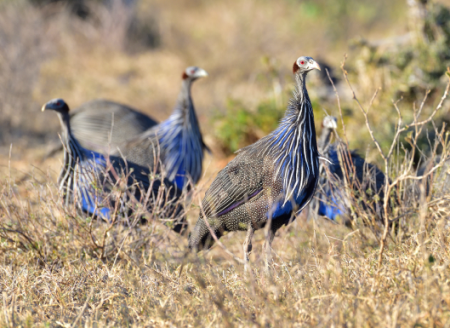 Above, the elegant Grey Crowned Crane is a native of Kenya, Uganda and Tanzania while on the left, the Vulturine Guineafowl calls southern Ethiopia, Kenya and the very north of Tanzania home.
Above, the elegant Grey Crowned Crane is a native of Kenya, Uganda and Tanzania while on the left, the Vulturine Guineafowl calls southern Ethiopia, Kenya and the very north of Tanzania home.
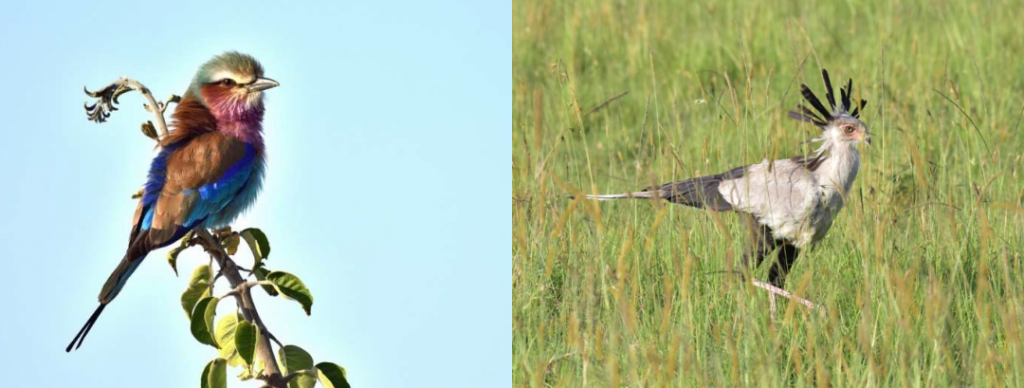
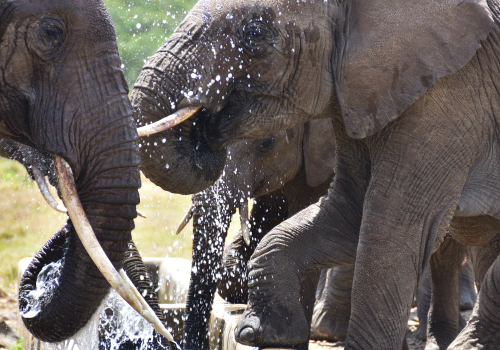
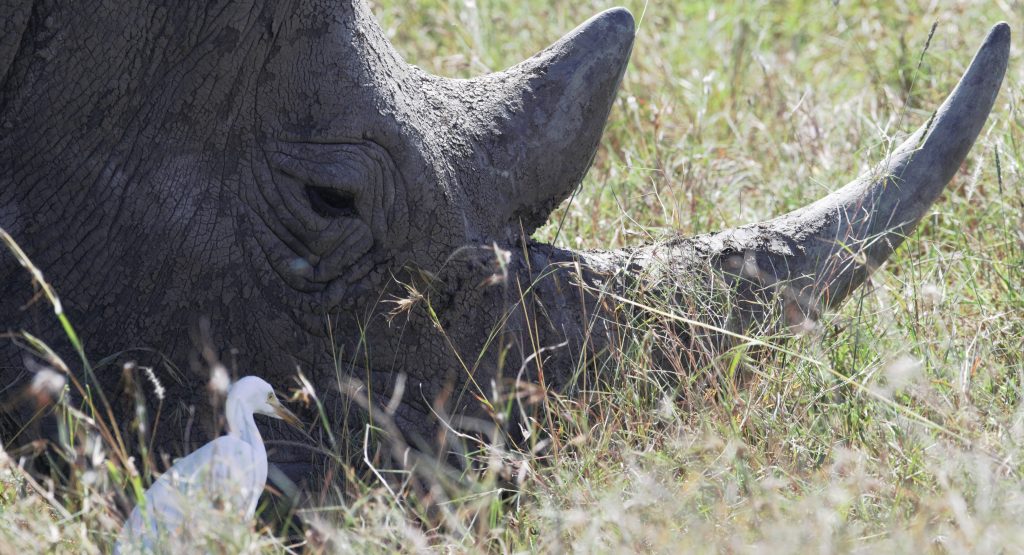 Kenya has both white rhino …….. To be accurate these are southern white rhino of which there are about 16,000 in the wild and captivity. The two female northern white rhino in Ol Pejeta Conservancy are the last two individauls of their race. Once these two rhinos die the northern race of white rhinos will be extinct. …….and black rhinos. Actually Eastern Black Rhino of which there are estimated to only be around 1000 individuas left in the wild and captivity.
Kenya has both white rhino …….. To be accurate these are southern white rhino of which there are about 16,000 in the wild and captivity. The two female northern white rhino in Ol Pejeta Conservancy are the last two individauls of their race. Once these two rhinos die the northern race of white rhinos will be extinct. …….and black rhinos. Actually Eastern Black Rhino of which there are estimated to only be around 1000 individuas left in the wild and captivity.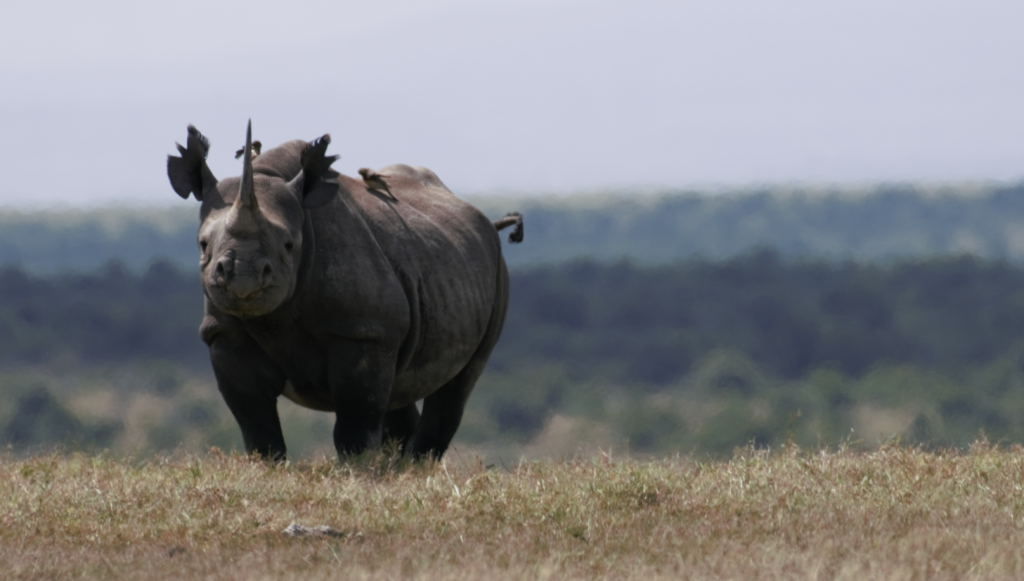
Of course, it’s not just about elephants and rhinos (and birds, zebra, topi, gazelles, buffalo, etc.) at the top of many travellers wish list is the rest of the Big 5 – lions and leopard. We encountered the River Pride (Mara river) lions and the three nomadic males known as the Lemek boys on several occasions. The River Pride killed two adult female buffalo and a calf and provided food for not only the pride members but also hyena and vultures.
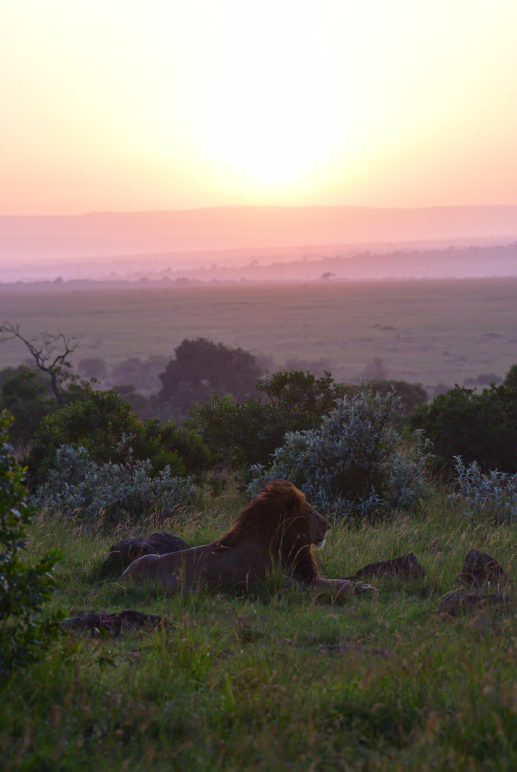 Camp routine for modern photographic safari holidays used to differ little from the routine of the hunting safari camps but, over the years, camp operators have adopted a more flexible approach to game drives and meal arrangements. It is now possible in many areas to leave early and to stay out for far longer than in the past and to take meals in the bush. We’ve done it many times and opted to take a bush breakfast on this game drive. After revisiting the site of the River Pride’s kills we had breakfast on a bend of the Olare Orok river (a tributary of the Talek river) in the shade of the riverine trees. Who would know that we would be back there early into the afternoon game drive to view a leopard that had made a kill within a few metres of where we had been having breakfast that morning! Perhaps she was watching us as we drank our morning coffee?
Camp routine for modern photographic safari holidays used to differ little from the routine of the hunting safari camps but, over the years, camp operators have adopted a more flexible approach to game drives and meal arrangements. It is now possible in many areas to leave early and to stay out for far longer than in the past and to take meals in the bush. We’ve done it many times and opted to take a bush breakfast on this game drive. After revisiting the site of the River Pride’s kills we had breakfast on a bend of the Olare Orok river (a tributary of the Talek river) in the shade of the riverine trees. Who would know that we would be back there early into the afternoon game drive to view a leopard that had made a kill within a few metres of where we had been having breakfast that morning! Perhaps she was watching us as we drank our morning coffee?
More of that encounter below.
Then there are cheetah – another firm favourite of our clients.
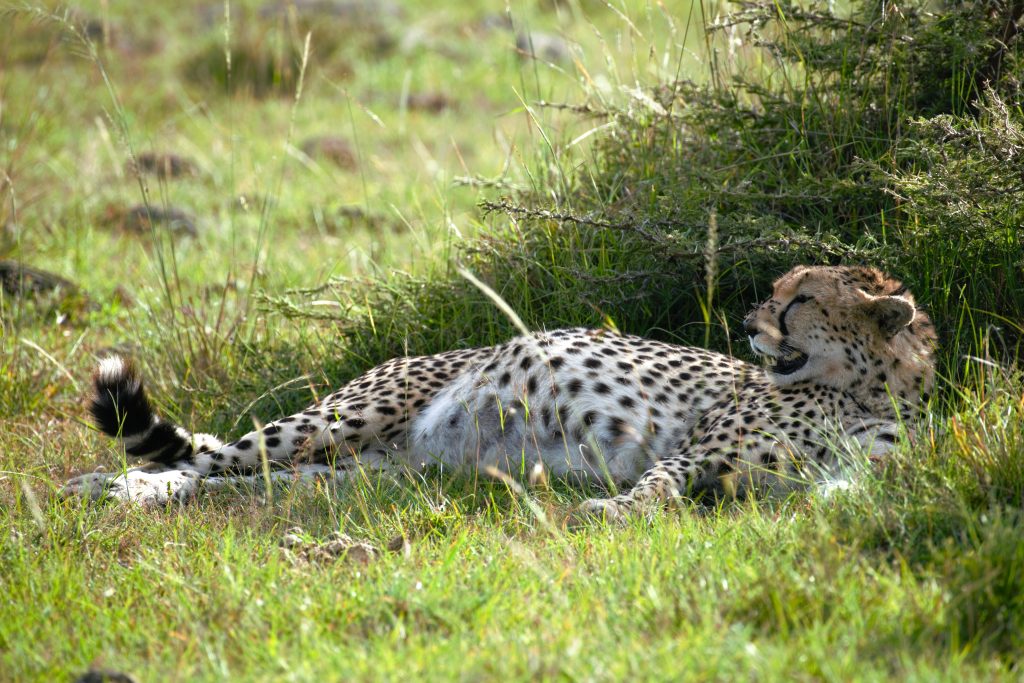 Despite being active in daytime Cheetah can be as elusive as leopards. A Cheetah’s territory can extend from 10s to 100s of square kilometres – especially for females on the open plains hunting migratory game. Nomadic males (those not defending territories) can travel vast distances and newly independent Cheetahs often disperse 100s of kilometres from their birthplace. All this makes great guides indispensable when tracking cheetah. We encountered several of these elusive cats on this trip though none with cubs that we’ve seen before in the Mara.
Despite being active in daytime Cheetah can be as elusive as leopards. A Cheetah’s territory can extend from 10s to 100s of square kilometres – especially for females on the open plains hunting migratory game. Nomadic males (those not defending territories) can travel vast distances and newly independent Cheetahs often disperse 100s of kilometres from their birthplace. All this makes great guides indispensable when tracking cheetah. We encountered several of these elusive cats on this trip though none with cubs that we’ve seen before in the Mara.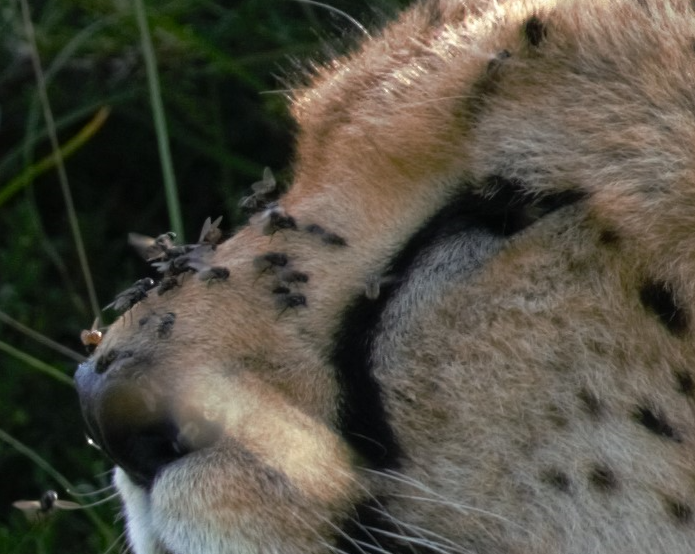 This female was well fed but plagued with flies! Another was being shadowed by a hyena. Hyenas frequently do this in the hope that they can dispossess the cheetah from any kill it might make but which effectively deters the cheetah from hunting unless they can give the hyena the slip. This cheetah managed to elude the hyena but the afternoon was passing and the opportunity diminishing for the cheetah to make a kill before the next morning.
This female was well fed but plagued with flies! Another was being shadowed by a hyena. Hyenas frequently do this in the hope that they can dispossess the cheetah from any kill it might make but which effectively deters the cheetah from hunting unless they can give the hyena the slip. This cheetah managed to elude the hyena but the afternoon was passing and the opportunity diminishing for the cheetah to make a kill before the next morning.
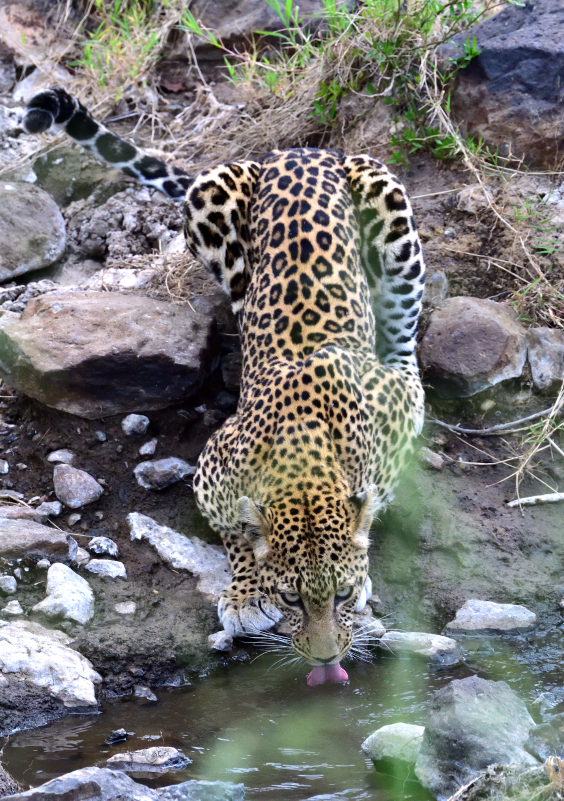 Leopards tend to be solitary with territories from a few tens of square kilometres to, perhaps, 2000 square kilometres. They are stealth/ambush hunters. Combining the potentially large size of a leopard’s territory with the fact that they are crepuscular/nocturnal and their preference for ambushing their prey from cover, or even dropping on an antelope from as high as 9 metres above, and you’ll understand the old saying about seeing leopards because the leopard allows you to see it is so true. Now 17-years old this wonderful leopard, known by the guides as Nalangu (she who “crosses rivers”), has brought many litters of cubs into the world. Our guide Simon anticipated that Nalangu would drink after eating and positioned our vehicle where we thought she might go. We waited patiently while Nalangu lapped water and were rewarded with this one image where she extended her tongue and then looked straight at our cameras. It was just a pity that we couldn’t cut down the long fronds of grass in the foreground!
Leopards tend to be solitary with territories from a few tens of square kilometres to, perhaps, 2000 square kilometres. They are stealth/ambush hunters. Combining the potentially large size of a leopard’s territory with the fact that they are crepuscular/nocturnal and their preference for ambushing their prey from cover, or even dropping on an antelope from as high as 9 metres above, and you’ll understand the old saying about seeing leopards because the leopard allows you to see it is so true. Now 17-years old this wonderful leopard, known by the guides as Nalangu (she who “crosses rivers”), has brought many litters of cubs into the world. Our guide Simon anticipated that Nalangu would drink after eating and positioned our vehicle where we thought she might go. We waited patiently while Nalangu lapped water and were rewarded with this one image where she extended her tongue and then looked straight at our cameras. It was just a pity that we couldn’t cut down the long fronds of grass in the foreground!
Our Safari Experience, Itineraries and Special Offers
While we have extensive experience and a wealth of contacts and knowledge from travelling in southern Africa from 30-years spent on safari when creating a Safari we focus on you. So the first step is to get a complete understanding of what you are after and then we can interpret your wishes into a wonderful trip packed with experiences. We always thoughtfully curate our itineraries combining as many of your wishes and ideas as possible within your budget so that your safari creates memories to last a lifetime.
PS: None of the images in this Newsletter are reproduced from commercial sites. We took all of the images featured, from the Zanzibar beach scene that appears behind the Newsletter heading and the dugout canoe behind the title to Nalangu drinking from the stream. We strive to create itineraries that will get you these life affirming memories – first class locations with astounding wildlife and wonderful interactions with your worldclass guides.

These Green Season Rates are hard to beat, staying at some of the best wildlife camps in Botswana!
One week (7 nights), Three camps, a lifetime of sightings Explore Botswana’s truly wild places with guide and tracker from the winding Kwando River to the game filled plains of Lebala and the legendary Okavango Delta.
2 nights Lagoon Camp, Linyanti
2 nights Lebala Camp, Linyanti
3 night 4 Rivers or Splash Camp, Okavango Delta
Package Fully Inclusive, Accommodation, Internal flights & transfers. Exludes International flights, Visas, staff gratuities. Other Camp Choices are Available
Note: Surcharge applies over Christmas/New Year

Experience Botswana with our unbeatable special offer – Call now:+442039294375, email: safari@safarico.uk or complete a CONTACT form.

